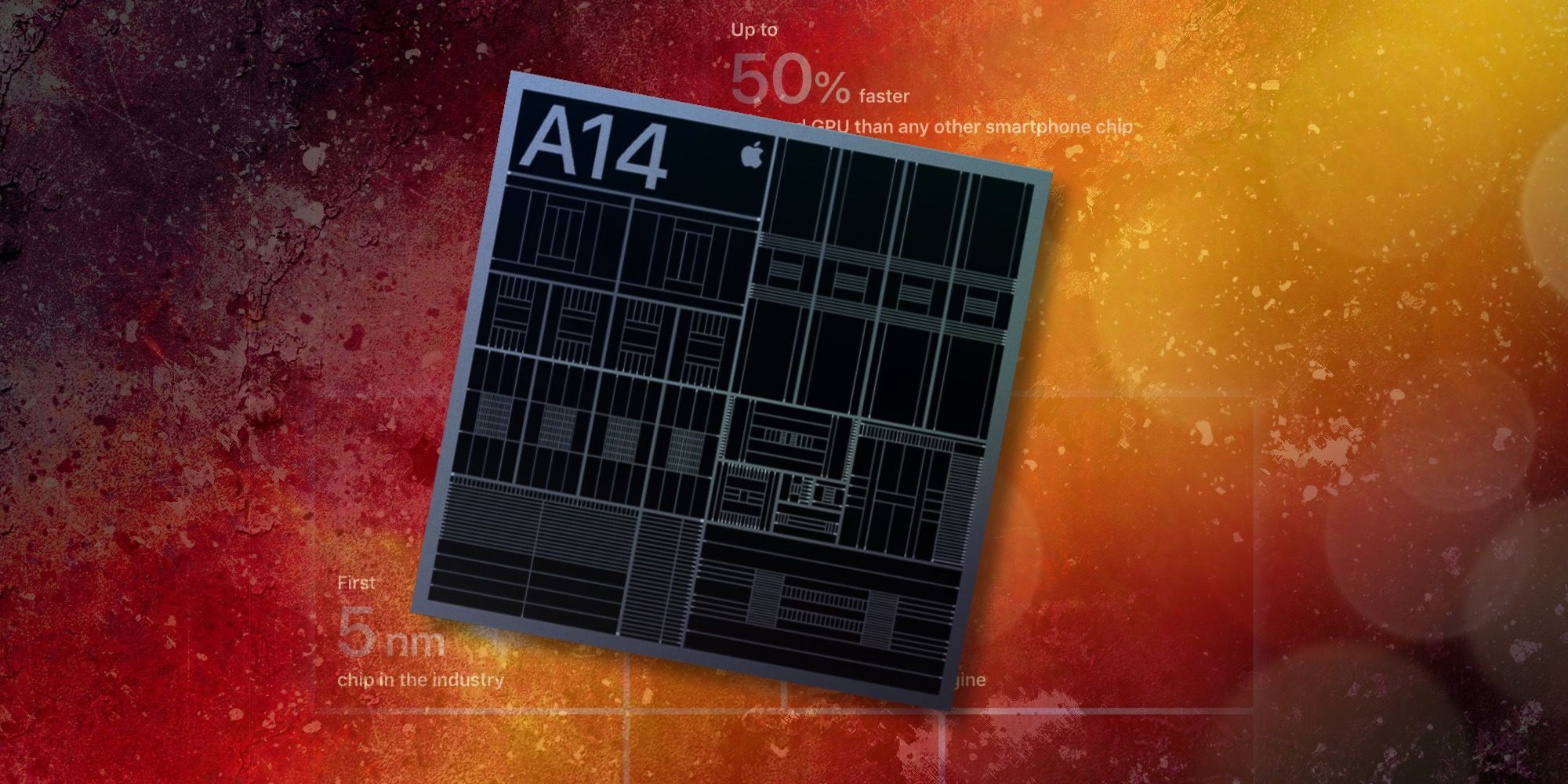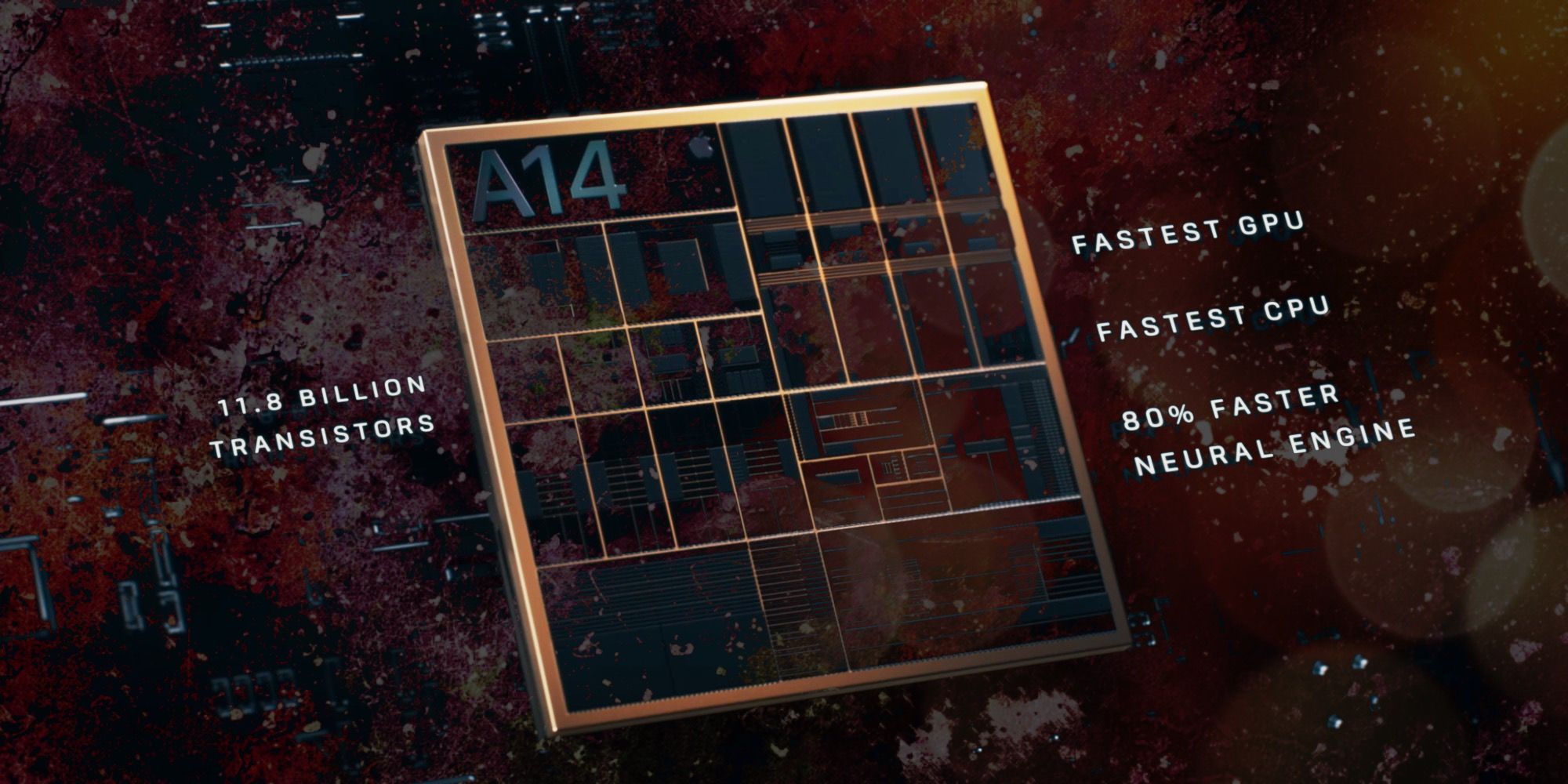Every iPhone 12 model contains Apple's A14 Bionic chip. This is the first mobile phone processor to use a 5 nanometer manufacturing process. Many will already be expecting it to be very fast, since Apple CPUs and GPUs keep making big improvements year after year. What may not be as well understood is how many features of the new iPhone are dependent upon the A14.
In computer chips, the size of the transistor dramatically affects the potential speed and efficiency of the processor. Apple's first iPhone used a 90-nanometer process, meaning the size of a single gate in the transistor. A nanometer is one billionth of a meter or one millionth of a millimeter, so it's nearly atomic-scale electronic etching of circuitry that allows a computer chip to do its work. The current 5-nanometer process is an eighteenth the size that Apple started with, indicating how far it has come. The smaller the process, the less power lost due to resistance, which generates less heat and electrons travel a shorter distance to complete the circuit. That equates to greater speed, less energy used and a cooler CPU and GPU, which is preferable.
The A14 processor in Apple's new iPhone 12 lineup is the same that powers the much larger iPad Air 4. Apple boasted that the Air 4 is faster than most PC laptops. Now this same chip resides in its smartphone, the iPhone 12. What can the iPhone do with that much power? The new camera technology makes great use of the speed, using machine learning models to enhance photos with Deep Fusion image stacking that combines multiple exposures more quickly than ever to enhance lighting and color. The A14 is critical to the real time Dolby Vision encoding of 4K resolution, 60 frames per second video. Apple boasts that this color grading process is used in the movie industry and is normally done in post production. Now it can all happen on an iPhone 12 as the video is being recorded. It's quite an impressive achievement.
A14 Efficiency & Augmented Reality
The Apple iPhone 12 is thinner, smaller and lighter than ever, relative to the screen size of the particular device. For example, the iPhone 12 has 19-percent less volume and 15-percent less weight than the iPhone 11, which has the same number of cameras and the same size screen. When losing that much volume and mass, the battery life would normally be reduced, but it's not. The iPhone 12 battery life estimates are the same for most tests and it actually gains an hour in the streaming video test. That is due to the A14's improved efficiency, generating more speed from less energy. It seems almost like magic, but this same process is largely responsible for the steep climb in performance for all electronics.
The iPhone 12 Pro and Pro Max feature LiDAR. The acronym expands to Light Detection And Ranging. It means the scanner fires laser light and measures the time it takes to return to the sensor to detect distance. This provides the processor with a cloud of three-dimensional points. With the fantastic speed of the A14, the iPhone 12 Pro models can reconstruct a three-dimensional map from the scan and use that to assist with more light photography, even allowing Portrait Mode photos to be taken in combination with Night Mode. LiDAR also provides the absolute best Augmented Reality (AR) experiences, since there is no need to wave the phone from side to side for several seconds to orient the device to reality. Instead it's nearly instantaneous. This will also allow easier mobile development of AR creations and measurements of real world structures and systems for various purposes. These are the early days of AR research and these new phones will likely speed the process up dramatically.
Apple mentions 11.8 billion transistors, a 16‑core Neural Engine capable of 11 trillion operations per second, 80-percent faster Deep Fusion, 70-percent faster dedicated machine learning accelerators, an image signal processor that allows 4K HDR recording with Dolby Vision, Smart HDR 3 and advanced temporal noise reduction. It all sounds very impressive and it is. The important takeaway is that Apple currently has a huge lead in mobile processing power and it may finally be tapping into that potential in a way that is clearly visible and beneficial to the user. The A14 is the best smartphone chip currently available and it's powering some of the most impressive camera and AR tech to ever be processed on a smartphone, iPhone or otherwise.
Source: Apple


